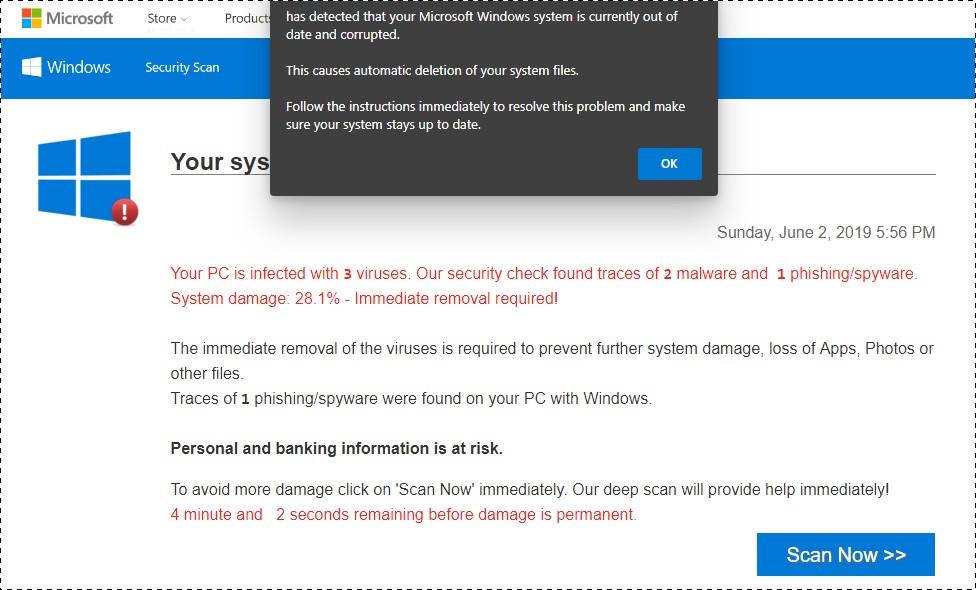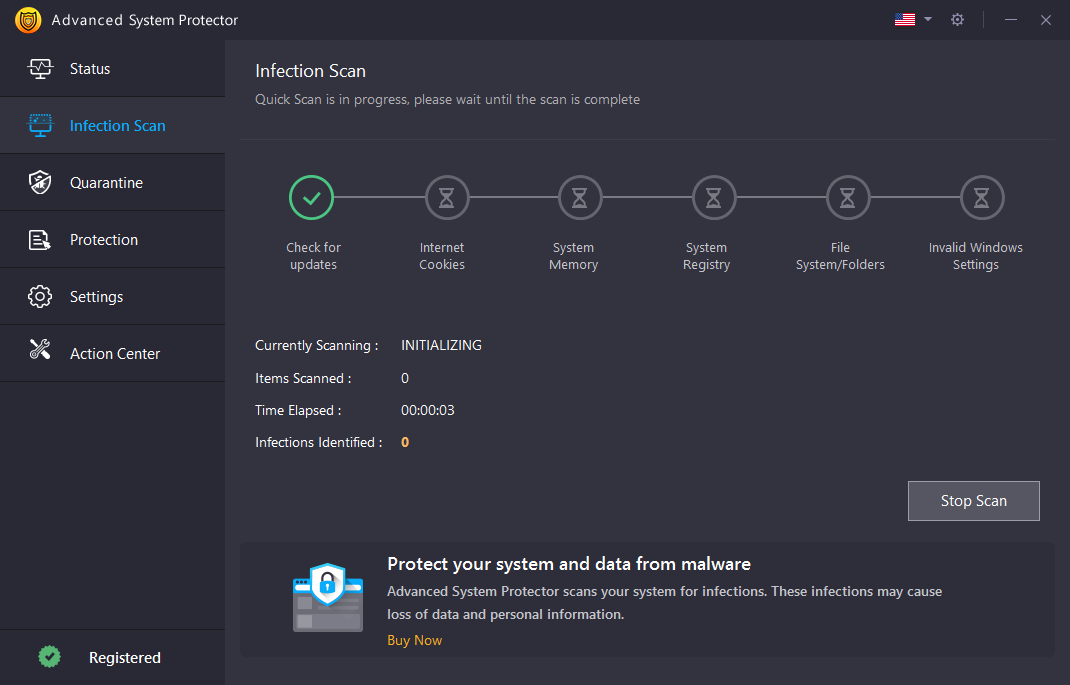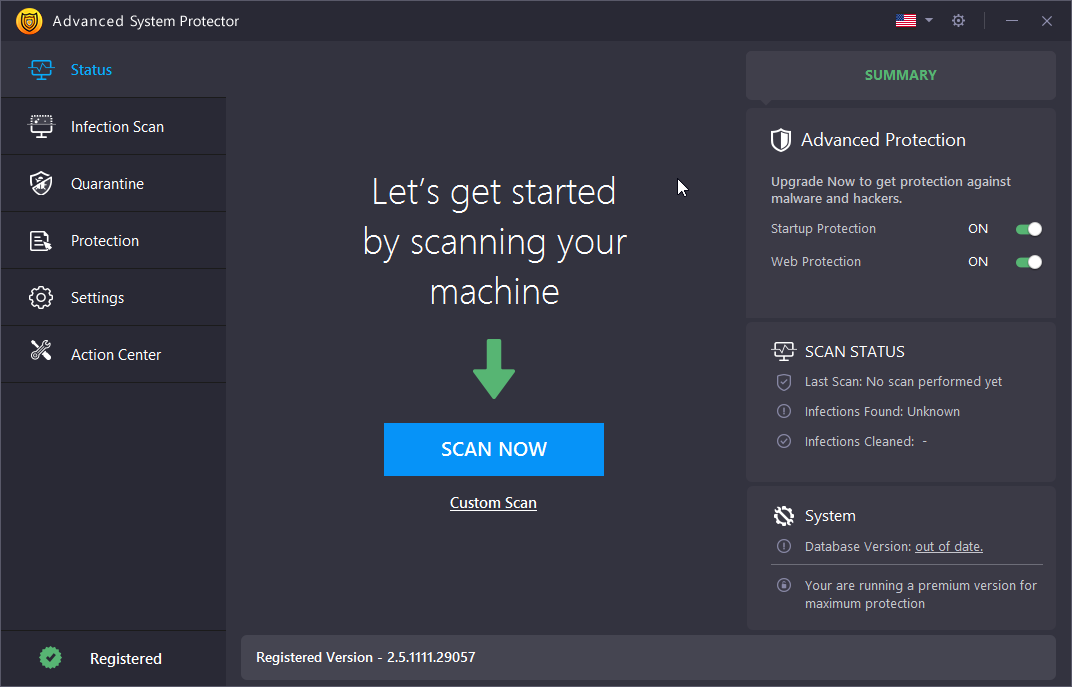Windows Defender is the firewall and anti-virus protection software installed in every Windows 10-powered system by default. Windows Defender is designed for detecting and blocking malvertising attempts; downloads from unknown sources; scan downloaded files for possible traces of virus or malware and protect the system from potentially unwanted installations. Windows Defender is the replacement for all sorts of anti-virus software offered by Microsoft. However, Microsoft never places Defender against any anti-virus software application and completely consider and markets it as a companion program to add an additional layer of security to Windows-powered computers.
However, recently Windows Defender firewall protection was bypassed in multiple systems by some malvertising campaign on selected Microsoft applications. Though harmless until downloaded, the malware pop-up resembled a genuine Windows notification. A lot of users fell prey to it and still, Windows Defender is unable to detect such notifications as malware. Is it better to have a third-party software besides Defender to ensure system protection? Know what one can use against such malware possibilities and how Windows has responded to this new breach.
Also Read: Top Windows speed up tool in 2020
Windows “System Corrupt” Malware Pop-Up

Reported first at Microsoft Corporation’s German headquarters, this malware is injected into your system if you follow the pop-up notification by clicking on it. The pop-up resembles the usual Windows notifications, white texts over a greyish background, written in a similar font.
The notification warns the user of possible corruption or system crash that may lead to permanent deletion of user files. The notification then requests the user to follow a set of instructions, beginning from an OK button at the bottom right corner. Once the user clicks on the button, malware is injected into the system.
This ad is appearing majorly on Microsoft applications such as Microsoft games. Some ads like this may also lead users to a fraudulent link for downloading some extension files in the system. Microsoft has claimed that any such activity is never required in case of resolving virus problems and that doing so would cause more harm to user data and privacy.
 How To Turn On Windows Defender In Windows...Looking for a reliable anti-spyware or antivirus for Windows 10? If yes, then stop looking as the in-built Windows Defender...
How To Turn On Windows Defender In Windows...Looking for a reliable anti-spyware or antivirus for Windows 10? If yes, then stop looking as the in-built Windows Defender...Possible Threats of Following Malware Instructions

In this malware, the user is safe unless he/she clicks on that OK button. It’s important that any user interrupted by such a banner closes the Window immediately and do not follow the banner’s instructions. In case the banner wouldn’t shut down, one can kill the entire process by going for the task manager. The ad does do not block any activity over the PC until followed to the download of malware file. However, since the banner is similar to a Windows notification, a lot many people have suffered issues. As per reports from Microsoft, the banner leads to the download of a malware file which has nine different virus files in it. These files are capable enough for imposing Denial of Service (DoS) over the users, thus, making such banners a ransomware threat as well.
Ad Blockers Ineffective in Dealing This Case
Since Microsoft hasn’t announced any resolution to this error in its operating system besides the announcement, “Just Close the Window”, users have sought to Ad blockers to avoid such banners from popping up on their system screens. However, Ad blockers cannot possibly help in this matter. All the breaches in Defender firewall have been attempted at those apps which fall under Microsoft Advertising Campaign. Therefore, the banners are appearing on ad-supported apps. Ad blockers only block those ad-scripts, which are integrated within the app for marketing purposes. But any app under the campaign would by default supports ads regardless of what ad blockers do.
 How to Enable Crapware Protection In Windows DefenderIf you’re looking forward to knowing how to protect your computer form crapware or how to boost up the Windows...
How to Enable Crapware Protection In Windows DefenderIf you’re looking forward to knowing how to protect your computer form crapware or how to boost up the Windows...Solution: Use an Effective Tool or Software to Scan System for Potential Malware

Defender still remains vulnerable to such banners, and there are far more harmful; dangers that such malvertising campaigns can cause. Therefore, it’s always better to use third-party software to cater to such security requirements to prevent your computer from malware threats.
Advanced System Protector is a great software tool that helps the users to stray off malware threats and infected adware campaigns. Advanced System Protector acts as a security layer on your system that helps you detect and clean malware traces, detect and remove unwanted adware, and provide real-time protection against spyware dangers. This makes Advanced System Protector a combination tool comprising of antimalware and antivirus features.
Advanced System Protector covers your protection from potentially threatening malware in simple steps:
Step 1: Run a complete system scan for detecting hidden malware infections and spyware traces and files.

Step 2: Quarantine detected malware and remove them from the system
Advanced System Protector’s algorithms carry out these procedures on their own without troubling you for anything. Besides a simple and quick use, Advanced System Protector also offers you complete control of the cleanup process through the following features:
-
Exclude Folders and Files for Scanning:

There are possibilities that you have some files over your PC that are confidential and you do not wish to include them on any software tool scan. Advanced System Protector allows you to exclude files from the scan.
-
Schedule Scan
User can maintain a regular check on their systems for malware and spyware by scheduling scans over Advanced System Protector.
-
Choose Scan Type
The users can select between a Deep Scan and Quick Scan. Deep Scan is always recommended in such cases for proper detection of malware. Besides these, a user can customize a scan limited to specific folders and files.
Windows Defender is always not sufficient enough to protect your systems from all sorts of virus or malware dangers. It even suggests using a separate tool for antimalware protection. By installing Advanced System Protector on your system, you can maintain a regular check on your PC for potential dangers of such kind. By scanning for detection of possible malware and spyware, you can protect your system from a possible DoS attack and permanent system crash caused by malvertising attempts.




 Subscribe Now & Never Miss The Latest Tech Updates!
Subscribe Now & Never Miss The Latest Tech Updates!